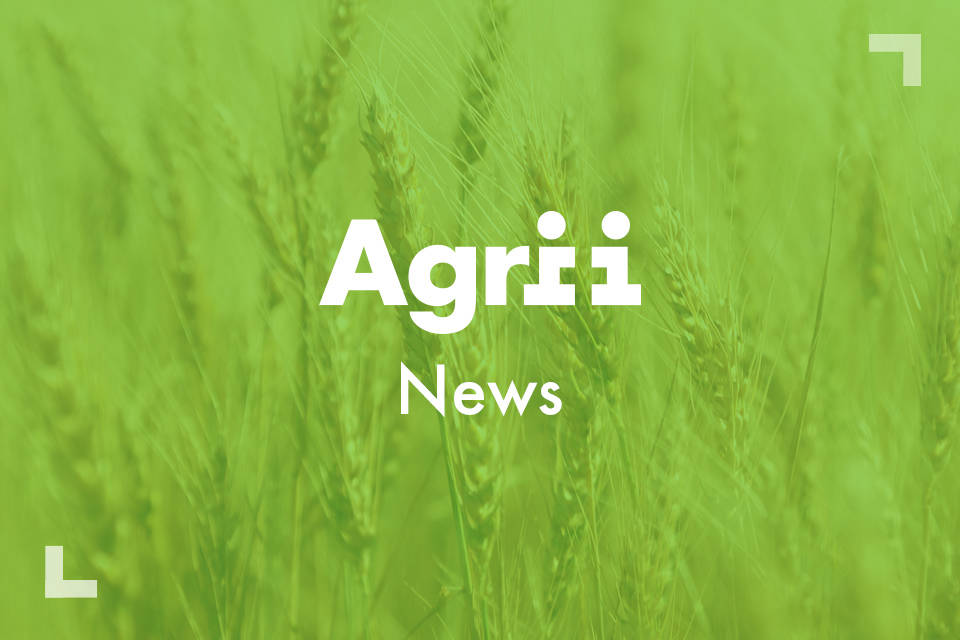What you need to know about SFI herbal leys payments
This content was published in good faith on 10th November 2024. While we strive to keep our information accurate and current, agricultural practices and recommendations may evolve. For the latest guidance and advice tailored to your specific needs, please contact your local Agrii representative.
Herbal leys aren’t new to farmers but with an increasing range of nutrient-rich mixes on offer, coupled with attractive Government incentives for planting herbal leys, they are growing in popularity.
Herbal leys deliver a wealth of benefits. Most are aware of the value of herbal leys for improving livestock health and performance but they also have great value for land by improving soil health from varied root structures, capturing carbon and boosting biodiversity.
Because of these benefits, they are now attracting Government funding under the Sustainable Farming Incentive (SFI), which aims to be more environmentally focus, improve landscapes and the resilience of the farming sector, and focus the nation’s food security.
In this article we explore the value of herbal leys, which mixes may be suitable for your land, and grassland management. Crucially, we demonstrate how you can secure funding for your farm by using herbal leys under the SFI scheme by producing high quality, valuable forage.

Approach Us
We’re here to help your business ambitions. See how we could work together, we’d love to hear from you.
Let's TalkAn Overview of Herbal Leys
Herbal leys can be made up of a wide mixture of grasses, legumes and herbs, and are traditionally sown to create high-quality forage for livestock, especially in the dryer, summer months. However, they are also increasingly being recognised for their value in improving soil health and structure and can offer benefits to a range of farming operations.
The strength of herbal leys lie in their diversity. For livestock, this valuable mixture of species creates a diverse and nutrient-rich diet due to deep rooted species mining minerals from the soil’s depth and making them available via the forage. This can either be as grazable forage or as a silage that can be fed to livestock year-round.
For your soil, the mixture of species ensures that roots penetrate to different levels, dramatically improving soil structure, helping to prevent leaching, increasing moisture and nutrient retention, helping to capture carbon, improving organic matter content and, ultimately, helping to boost the health of your soil.
The legumes in herbal leys also fix nitrogen, which means they increase the nutrient value of the soil, helping to reduce costly fertiliser applications.
As well as this, herbal ley mixtures increase biodiversity, supporting a wide range of beneficial insects and wildlife and boosting the whole farm’s ecosystem. The diversity of swards from multiple plant species can bring strength and improve pest resistance by disrupting pest life cycles.
Crucially, because herbal leys are by their very nature a mixture, you must make sure the mixture you choose is suited to your livestock or land, so you can maximise the benefits to your farm.
Herbal Ley Mixes
As we’ve said, a herbal ley can be a mixture of a wide range of plant species but the good news is that there are a range of pre-mixed herbal ley options that will deliver value to your farm.
When choosing a suitable herbal ley mix, make sure you select something with a diverse mix of grasses, legumes, and herbs that are suited to your whole farm enterprise. Speak to your agronomist if you are unsure which mix will deliver the best value.
Under the 2023 SFI scheme, the voluntary guidance for SAM3 asks that farmers include five grass species, three legume species and five herbs, whereas the 2024 CSAM3 mix requires a minimum of one grass, two legumes and two herbs. It also stipulates you must minimise the use of inorganic fertilisers containing Nitrogen, which is usually set at no more than around 40 kg of N per hectare per year.
Common species in herbal leys include Ryegrass, Timothy, Fescues, Cocksfoot, Festulolium, Red and White clover, Birdsfoot trefoil, Chicory, Plantain, Sheeps Burnet, Sheeps Parsley, and Yarrow.
Agrii has a range of mixes that specifically designed to meet the needs of the Sustainable Farming Incentive ranging from mixes aimed at delivering maximum forage production for livestock to mixes created for overseeding where farmers are looking to increase the diversity of the sward.
Each farm’s management regime will be different and you can speak to an Agrii specialist who will be able to advise you on which mix will best suit your specific needs.
SFI Payments
Tens of thousands of farmers have now taken advantage of the Sustainable Farming Incentive (SFI) scheme which is aimed at rewarding farmers for adopting environmental land management practices.
There are a wide range of cash incentives available to you for a variety of schemes ranging from improving soil health and biodiversity through to helping to combat flooding.
The SFI scheme is particularly attractive as it can run alongside other Government programmes, ensuring you can extract more value from your land.
SAM3 (2023)
The objective of the SAM3 option is focused on improving soil structure and helping to increase carbon capture while boosting soil biology and fertility.
Under the scheme, you can claim £382 per hectare and eligible land includes arable land along with temporary and permanent grassland.
The aim of SAM3 is to establish a new herbal ley. However, you can apply for SAM3 to maintain an existing herbal ley but only if it is not already being paid for under another environmental land management scheme option.
CSAM3 (2024)
The CSAM3 option differs slightly in that its aim is to establish a herbal ley with a mixture of grasses, legumes and herbs or wildflowers that will produce a high volume of forage with minimal use of inorganic fertiliser.
The scheme also aims to help make land more drought resilient while improving and maintaining the soil’s structure, carbon, biology and fertility.
Under CSAM3, the minimum number of species you can include to meet the requirements of the scheme are one grass species, two legumes and two herbs, but you will get greater diversity by adding more species.
Again, you can claim £382 per hectare and eligible land includes arable land, arable land lying fallow and temporary and permanent grassland.
With the CSAM3 option, you are required to establish the herbal ley by early autumn, within 12 months of this action’s start date, and it must then be carefully maintained at the same location until the objectives of the action can be achieved. The guidance suggests this would be the end of the second summer after sowing. After this time, you do have the option to rotate the herbal ley to another part of the farm.
You are also expected to re-establish the herbal ley by early autumn (either at the same location or a different location) and maintain it until the action’s end date.
Scheme Requirements
The SFI scheme has a number of key requirements, including making sure you keep a record and evidence (including photos) to show you are performing the actions. This includes keeping receipts for the seed mix you use and any other relevant documentation.
Under both options, you are expected and advised to maintain the herbal ley and this can be done by grazing or cutting but you should leave it untouched for at least five consecutive weeks between early May and late July. This will allow flowers to open and provide a source of pollen and nectar for insects.
While rotation is an option, it’s also important to ensure the herbal ley achieves the objectives around improving soil health and this can take considerable time. So, make sure the soil structure has benefited from the herbal ley before moving on and, if any area fails, make sure to overseed it.
Under CSAM3, there are also strict restrictions on the amount of inorganic fertilisers you can use. The guidance says you should not use more than 40 kilograms (kg) of nitrogen per ha per year.
With both, the use of herbicides and pesticides is also restricted. Herbicides should only be used to weed wipe or spot treat to control injurious weeds, invasive non-native species, nettles or bracken.
You also cannot destroy an existing ley to establish a new herbal ley.
Summary: The Benefits of Herbal Leys Under SFI
Even without Government funding, herbal leys are a valuable addition to a farming operation, creating a nutrient-rich and balanced diet that will improve livestock health and performance while also helping to improve soil and biodiversity, and cutting fertiliser inputs.
With the addition of the SFI payments, herbal leys become an option that is difficult to ignore and that is why thousands of farmers are planting them across the country.
The beauty of herbal leys is that they can run alongside a number of other schemes under both the SFI scheme and the Countryside Stewardship scheme, meaning you can build a system across the farm that attracts funding, brings environmental benefits, and also creates valuable forage.
If you’d like to learn more about how you can incorporate herbal leys into your farming operation or would like guidance on accessing funding through the SFI scheme, speak to one of our specialists today.

Agrii Environmental Services
Download the Brochure
The Agrii Sustainable Farming Incentive Knowledge Hub

SFI Arable Options

SFI Soil health

SFI Precision Agriculture

SFI Integrated Pest Management (IPM)

SFI Direct Drilling

SFI No Till

SFI SAM1 - Soil Management Plans

SFI Hedgerows

SFI Herbal Leys

SFI Companion Cropping

SFI Cover Crops

SFI Winter Bird Food

SFI Nitrogen Fixing

SFI Grassland Options

SFI improved grassland management

SFI Vineyard Cover Cropping

SFI Species Rich Grassland
Featured News
News - 17/06/25
Half of OSR area underwritten by establishment schemes
News - 27/05/25
Honouring Marek Nowakowski: A Day at Buckingham Palace
News - 01/05/25
Reducing the environmental impact of maize
News - 17/03/25
Agrii Partners with RapidAIM to Revolutionise Codling Moth Management in UK Apple Orchards
News - 07/03/25
Shining a Spotlight on Women in Agriculture




